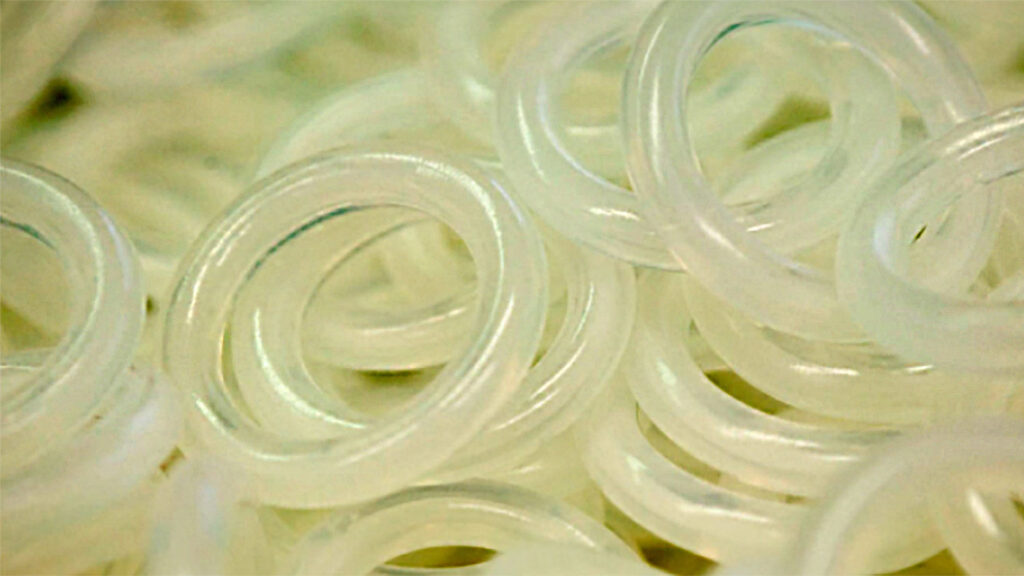Polymer-based dosage forms continuously administer the drug to the patient for an extended period, varying from weeks to years. Various administration routes are used, including parenteral, transdermal, and intravaginal. These controlled-release products are very suitable for certain indications, patient populations, and drugs due to the long duration of action, avoidance of first-pass metabolism, and constant systemic drug concentration levels.
Controlled-release contraceptive drugs are an established example that illustrates the benefits. The efficacy of contraceptives is highly connected with compliance; hence, contraceptive implants serve both efficacy and convenience. Similar benefits could apply to other drugs for long-term and chronic indications. Next to better efficacy because of better compliance, avoiding the peaks and troughs associated with taking oral medication can help to reduce adverse side effects.
The primary function of the polymer in the formulation is to regulate release, however, at the same time, it should display acceptable biocompatibility and satisfy various other requirements like suitable mechanical properties, the right processing properties, and so forth. In principle, various biocompatible polymers can be used as either non-degradable or biodegradable. Furthermore, various release mechanisms can be anticipated, for example, permeation through dense polymers (non-porous) by a dissolution-diffusion mechanism or through mechanisms relying on micro-porosity or pore formation. The choice of polymers is associated with a complex decision matrix that depends on various inputs like:
Commonly used non-degradable biocompatible polymers are polyethylene vinyl acetate (EVA), silicone elastomers, and thermoplastic polyurethanes (TPU). EVA copolymers can be obtained in grades differing in vinyl acetate content and molecular weight, properties affecting drug release and processability. More recently, TPU has increased application. Polyurethane chemistry is very versatile; hence, these polymers may have very different properties, from hydrophobic grades to hydrogels displaying an equilibrium water uptake of more than 100%. Hydrophilic polyurethanes are, in principle, suitable for releasing hydrophilic drugs and hence are complementary to EVA and silicone polymers which are less suitable for this purpose.
Biodegradable polymers, or bioresorbable polymers, are a term that applies to natural and synthetic polymers that degrade in-vivo over time. A common mechanism of degradation is hydrolysis, however, enzymatic degradation may play a role as well for certain polymers. The degradation mechanism is potentially complex as surface erosion and bulk degradation may occur simultaneously. Furthermore, autocatalysis may accelerate degradation because lactic acid accumulates in the interior of the degrading dosage form. The topic is extensive and cannot be elaborated on in detail here. However, our polymer experts are available for guidance and advice to our customers.

Several types of dosage forms have been developed, for example, sub-dermal implants, vaginal rings, films and many other very specific dosage forms. Next to the presentation form, controlled release products differ in how drug release is controlled. The simplest concept is a matrix, which is essentially a drug either dissolved or dispersed homogeneously through a polymer, and drug release is mainly diffusion controlled, although other processes like swelling and erosion may play a role. Drug release from matrix systems occurs through permeation or channels in the polymer. Such a matrix can be a ring, implant, or other dosage form. It typically displays first-order release kinetics, characterized by high on-set release in the early phase, followed by a steep decline without ever reaching a true steady state. This is acceptable for some applications, and when a more constant release is deemed necessary, a reservoir system or membrane-covered matrix can prove to be a good solution. In this case, the drug-loaded compartment is covered by a rate-limiting membrane, which results in nearly time-independent release profiles. Coextrusion is suitable for producing matrix and reservoir systems and improving concepts.
Our polymer and extrusion experts are eager to collaborate with you on developing polymer-based delivery systems, always with the end goal in mind: developing a scalable concept that can be produced robustly against affordable costs at any scale.